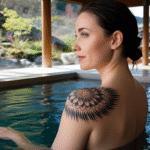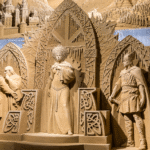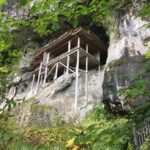
Contents
Overview
Misasa Onsen is a historic hot spring town in central Tottori Prefecture, known for having one of the highest natural radon concentrations in the world. For over 850 years, the onsen has been celebrated for its therapeutic effects and is associated with the healing deity Yakushi Nyorai (the Buddha of Medicine).
The town has preserved a traditional atmosphere: narrow stone streets, wooden ryokan along the Misasa River, and small public baths emitting gentle steam. Visitors come from across Japan and abroad to experience its combination of natural beauty, historic charm, and health-focused bathing culture.
Key Features
World-Famous Radon Hot Springs
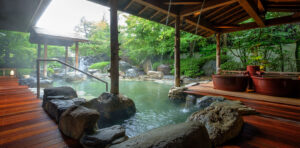
Misasa’s waters contain naturally occurring radon, believed in Japan to:
-
Boost metabolism
-
Activate the body’s natural healing abilities
-
Improve circulation
-
Strengthen the immune system
This effect is referred to locally as “hormesis”, where very small doses of natural radiation are thought to stimulate beneficial bodily responses.
Misasa Onsen is considered one of the top therapeutic hot springs in Japan, and many visitors participate in multi-day “health stays” at local ryokan.
A Healing Tradition Since the 12th Century
According to legend, a sacred white wolf guided a Buddhist monk to discover the spring. Since then, Misasa Onsen has been closely tied to the worship of Yakushi Nyorai, and many visitors offer prayers at Yakushi-do, a riverside temple hall protecting the springs.
Misasa developed into a center for “toji”—a traditional Japanese practice of staying at hot springs for extended healing. Several ryokan still offer multi-night stays and therapeutic programs.
Highlight Experiences
Kawara Rotenburo (Riverside Open-Air Bath)

This is Misasa’s most iconic landmark:
-
A completely open, mixed-gender outdoor bath beside the Misasa River
-
Free of charge
-
Visible from the surroundings
It is considered a symbolic experience of Misasa Onsen, though many visitors prefer to observe rather than bathe due to its very open nature. For privacy, most people enjoy the indoor or ryokan baths instead.
Stay in a Traditional Ryokan
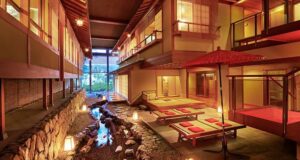
Misasa’s ryokan offer:
-
Radon hot spring baths (indoor and open-air)
-
Kaiseki meals featuring local Tottori specialties
-
Tatami rooms and serene river views
Some well-known ryokan offer private baths and radon therapy facilities.
Footbaths and Small Public Baths
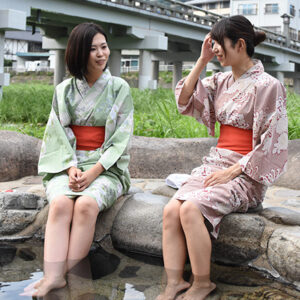
Throughout the town you’ll find:
-
Free footbaths along the streets
-
Old-fashioned public bathhouses
-
Small wooden tubs filled with radon-rich water
These allow visitors to enjoy the healing atmosphere casually.
Local Culture and Attractions
Yakushi-do Hall

A small riverside temple dedicated to the Buddha of Medicine. Visitors often:
-
Offer prayers for health
-
Purchase good-luck charms
-
Learn about the spring’s legendary origins
During festivals, the hall becomes a central gathering point for the community.
Misasa Bridge and Old Town Streets
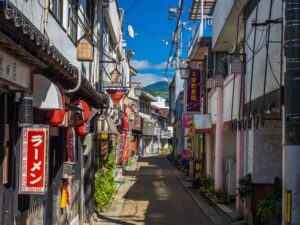
The stone bridge and preserved streets create a nostalgic view:
-
Wooden ryokan lined along the river
-
Lanterns glowing at night
-
Quiet pathways ideal for evening walks
The ambience feels like stepping into Japan’s early 20th century.
Misasa Art Museum
A modern museum featuring:
-
Regional artwork
-
Japanese paintings and calligraphy
-
Rotating exhibitions
A peaceful cultural stop between onsen visits.
Rokkaku-do Pavilion
An elegant riverside wooden structure offering a lovely viewpoint over the water and townscape.
Nature and Outdoor Activities
Mountains and Riverside Trails
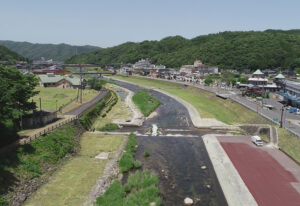
Misasa is surrounded by pristine forests and offers:
-
Easy hikes near the town
-
Riverfront pathways
-
Access to the larger Daisen-Oki National Park region
Autumn foliage is especially beautiful.
Nearby Destinations
-
Mount Mitoku and Nageire-do – A national treasure temple built into a cliff, requiring a spiritual pilgrimage hike
-
Kurayoshi’s White-Wall Warehouse District – A beautifully preserved merchant quarter
-
Tottori Sand Dunes – Japan’s largest sand dunes, accessible by car
Misasa is an excellent base for exploring central Tottori.
Food and Local Specialties
Tottori Wagyu Beef
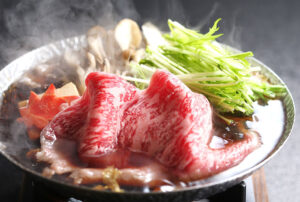
The region is famous for excellent beef, often featured in ryokan dinners.
River Fish and Local Cuisine
Look for:
-
Charcoal-grilled amago (red-spotted trout)
-
Seasonal mountain vegetables
-
Homemade tofu and miso
Pear Desserts
Tottori is Japan’s top pear producer, and many shops offer pear-based sweets.
Practical Information
Location
Misasa Town, Tottori Prefecture
Approximately in the center of the region, surrounded by mountains.
Access
By Train + Bus
-
From JR Kurayoshi Station, take a bus (approx. 20–25 minutes) to Misasa Onsen.
By Car
-
1 hour from Tottori City
-
2–3 hours from Okayama or Hiroshima
Roads are well-maintained, but winter driving may require snow precautions.
Best Time to Visit
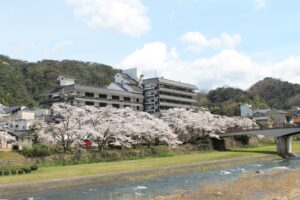
- Spring: Cherry blossoms along the river
-
Summer: Lush greenery and cool mountain air
-
Autumn: Peak foliage from late October to mid-November
-
Winter: Snowy landscapes and warming onsen baths
Misasa is a year-round destination.
Etiquette Tips
-
Shower thoroughly before entering any bath.
-
Tattoos are generally more accepted in rural Tottori, but check with your ryokan in advance.
-
Mixed bathing at the riverside kawara bath is optional and not required for enjoying the onsen town.
-
Outdoor baths may be closed during heavy rain or flooding.
Related articles
Official Website
Great Accommodation Site
